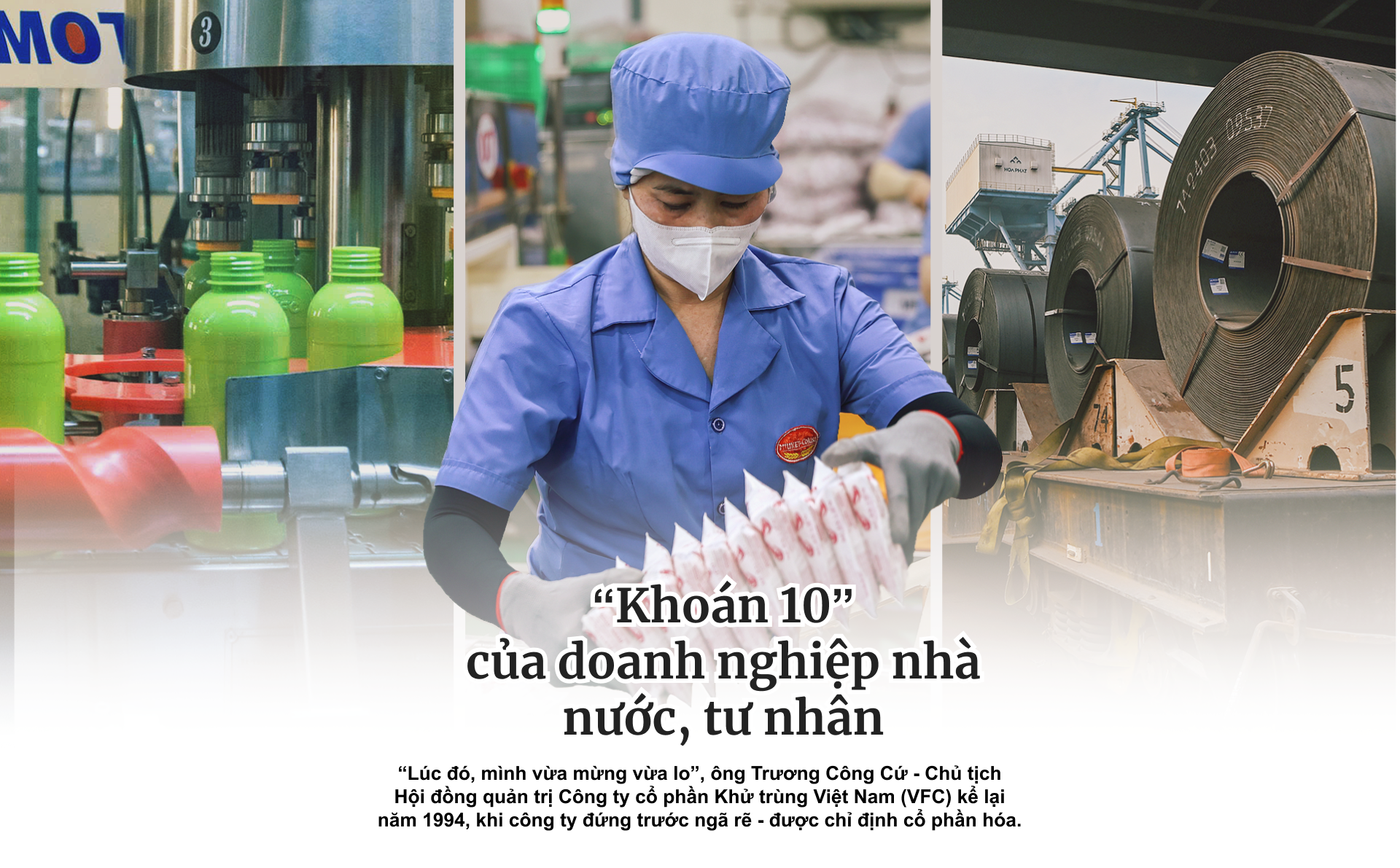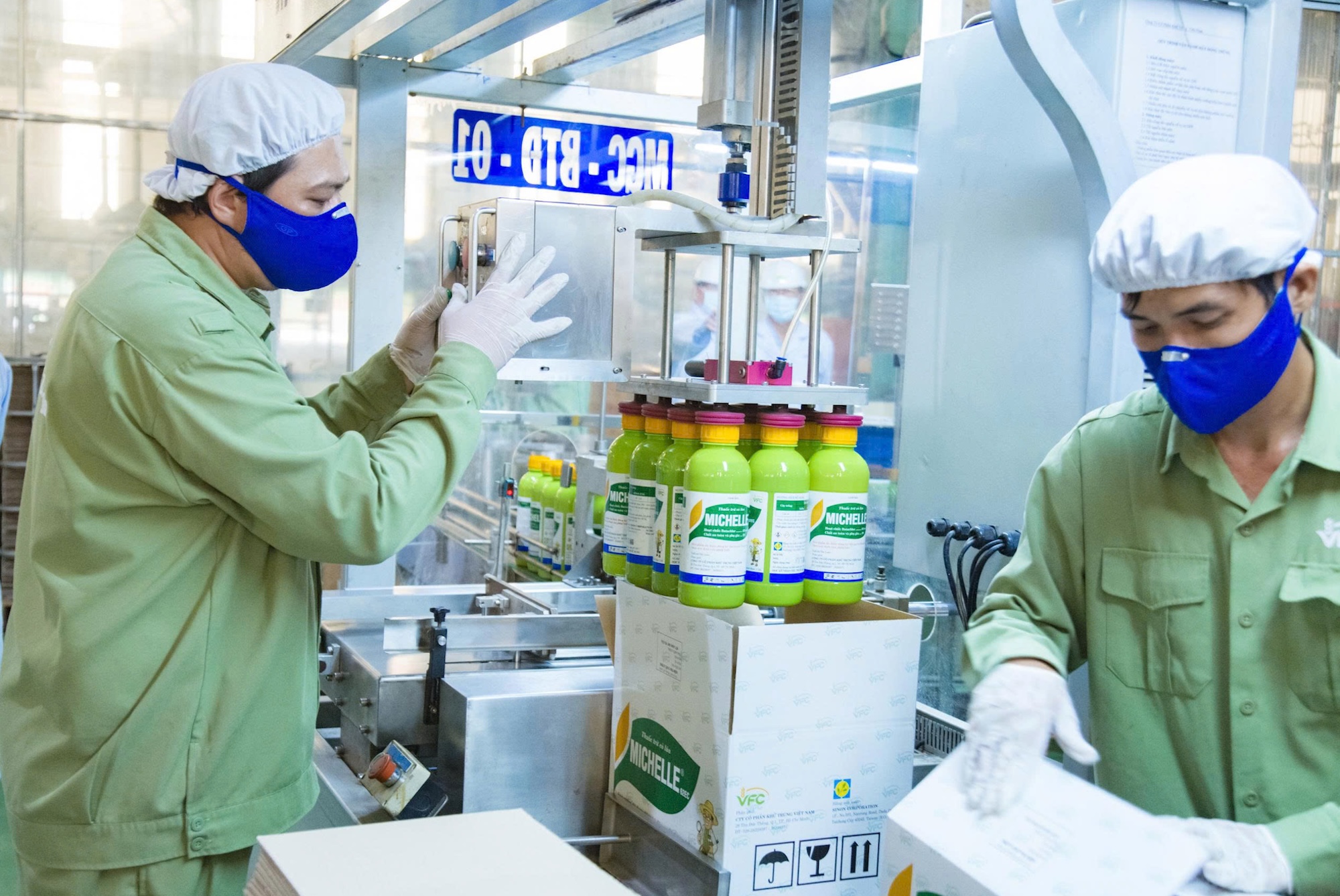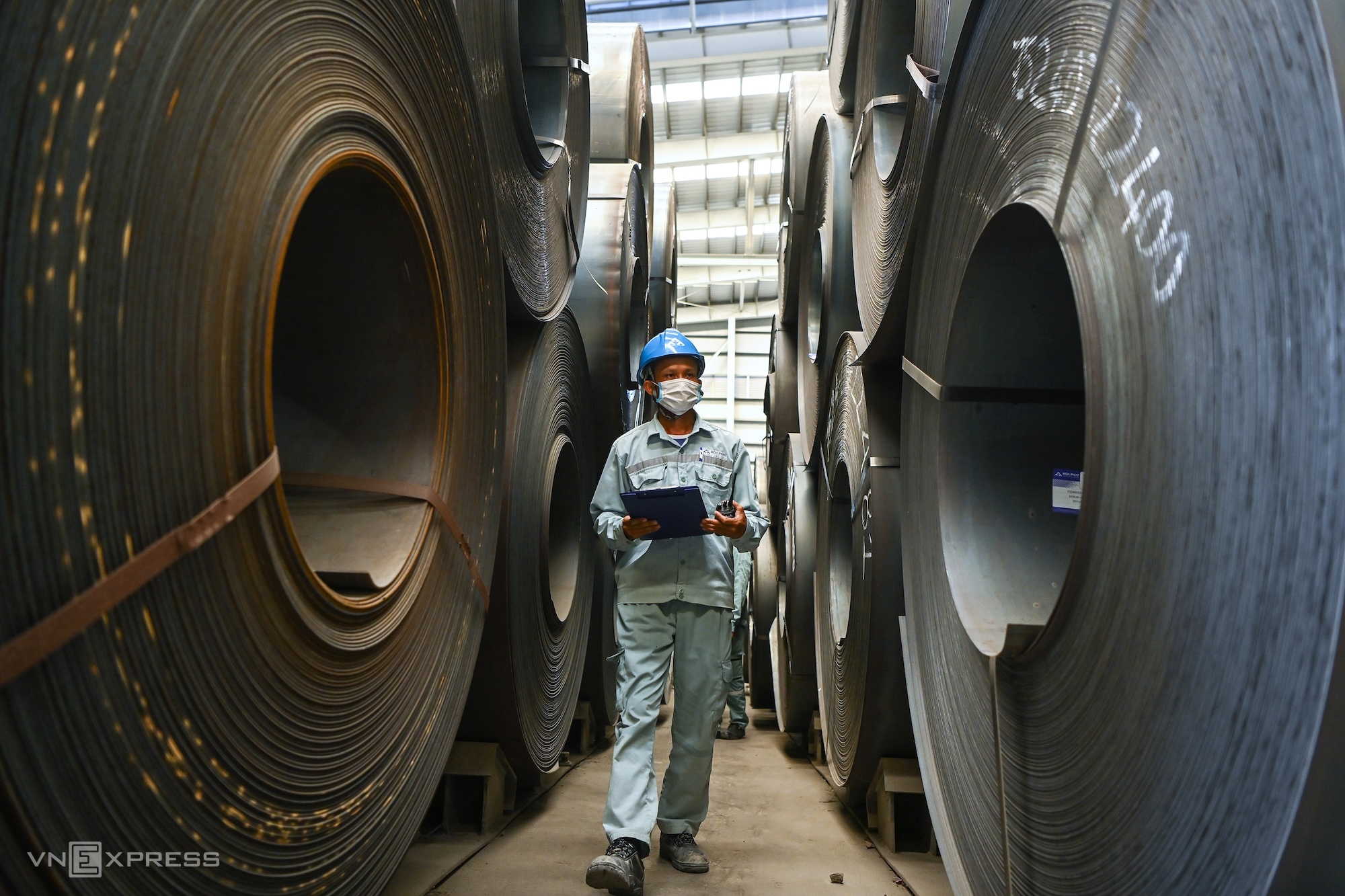 |
Truong Cong Cu, chairman of the Vietnam Fumigation Joint Stock Company (VFC), in 8/2025. *Photo: Thanh Tung* |
At the time, VFC, then known as the state-owned Fumigation Company II-TP HCM, operated under the Ministry of Agriculture and Food Industry (now the Ministry of Agriculture and Rural Development). It was chosen as one of the first agricultural companies to undergo privatization.
"We welcomed the directive as an opportunity to escape the bureaucratic, subsidized, planned economy that stifled growth, yet we were also concerned because few businesses had undertaken this path," Cu said.
Cu has dedicated nearly 50 years to the company, starting as a young technician at the Disinfection Team under the Plant Protection Department and progressing through various management roles at Fumigation Company II-TP HCM before becoming chairman of VFC. He views privatization as a turning point, transforming a small team of a few dozen into an agricultural technology company with 1,500 employees and annual sales of around 4 trillion VND.
Privatization exemplifies the spirit of "Contract 10," which originated in the agricultural sector and has permeated Vietnam's economic reforms over the past 40 years. "The spirit of Contract 10 empowers the people and serves them directly," said Nguyen Thuong Lang, senior lecturer at the Institute of Trade and International Economics (National Economics University).
"Losses borne by the state, profits taken by the state"
Before 1986, entities like VFC dominated production and business in Vietnam. The economic structure comprised state-owned enterprises and cooperatives, with a small fraction of individual businesses. Under the centralized subsidy system, neither sector had autonomy, from inputs (labor, capital, materials) to production and outputs (prices, distribution).
Operating under planned targets, these entities lacked incentives to improve productivity or compete. "Salaries and benefits were modest, lacking the strong motivation we see today," Cu recalled.
 |
Workers at VFC's factory in Duc Hoa, Tay Ninh (formerly Long An). *Photo: VFC* |
Ngo Thang Loi, a professor at the National Economics University, points out that enterprises lacked autonomy and accountability, as "losses were borne by the state, profits taken by the state." "This system paralyzed competition, hindered innovation, and stifled enterprise growth," he said. Consequently, machine capacity utilization was below 60%, and the accumulation rate per unit of fixed assets was only 0.25. The overall accumulation rate was also low, with only 0.33 VND retained for reinvestment and production for every 100 VND of capital.
The Vinh Hoi Cigarette Factory, cited by the late Professor Dang Phong in his book "Breaking Barriers in the Pre-Renovation Economy," exemplifies this. From 1976 to 1979, the factory faced crisis: dwindling materials, declining production, and dependence on allocations from the Enterprise Union, the Ministry of Light Industry, and the State Planning Committee.
The fishing industry, despite preferential capital and equipment, also suffered. The traditional supply chain was disrupted, leading to a sharp decline in output and exports. In 1980, the industry reached only 400,000 tons of fish and over 11 million USD in exports, a third of the target. Simultaneously, numerous factories in the south faced shortages of electricity, materials, and spare parts, leading to closures or reduced production.
According to the Ministry of Industry and Trade, the economy experienced low growth from 1976 to 1985, essentially stagnating. There was no internal accumulation due to insufficient production.
In 1981, the Council of Ministers issued Decisions 25 and 26, granting some autonomy to state-owned enterprises. They could partially manage their finances and materials, and retain profits after fulfilling budget obligations, enabling increased wages and bonuses, thus boosting worker motivation.
However, these measures proved inadequate. The aftermath of the 1985 Price-Wage-Currency reform necessitated comprehensive economic reform.
The sixth National Party Congress (1986) affirmed the dominant role of state-owned enterprises, influencing other economic sectors. Nguyen Thuong Lang explained that besides state-assigned plans, enterprises could develop their own production and business plans, leveraging their resources to improve worker welfare and increase welfare funds. "These changes were insignificant. Resources remained constrained, and enterprises were still trapped within the planned economy," he commented.
Privatization and the pressure to reform
From 1986, the first year of Doi Moi (economic renovation), the number of state-owned enterprises surged, reaching 12,297 in 1990, double the figure from four years prior. However, management and efficiency remained low. The state-owned sector enjoyed substantial preferential resources, accounting for 90% of the country's total credit, but its GDP contribution declined from nearly 43% in 1986 to 38% in 1990.
"Over 12,000 state-owned enterprises posed a significant ownership problem. The only solution was privatization," said Nguyen Thuong Lang.
In this context, the Council of Ministers issued Decision 143 in 1992, initiating privatization of the state-owned sector. Workers and other stakeholders participated in state-owned enterprises as shareholders.
 |
Workers at Hoa Phat Dung Quat Steel Plant, Quang Ngai province, in 8/2024. *Photo: Giang Huy* |
Enterprises where the state did not need 100% ownership, like VFC, were selected for pilot privatization. VFC prioritized its agricultural pharmaceutical business. Within two years, VFC officially became a joint-stock company with an initial charter capital of 21 billion VND, with the state holding 51%, later divesting completely. Today, VFC has a charter capital of 400 billion VND. Other successful companies during this period included the Transport Union, Hiep An Paper, the Poultry Feed Processing Company, and the Refrigeration Engineering Company, but they were few.
"The government was dissatisfied with these results," according to "Vietnam's Economy - Ups and Downs and Breakthroughs" by Pham Minh Chinh and Vuong Quan Hoang. By the early 2000s, the pilot privatization program expanded to 583 enterprises.
Concurrently, the third plenum of the ninth Central Committee formulated a more comprehensive plan for state-owned enterprise reform, including dissolution, merger, sale, and lease. By the end of 2000, the number of enterprises had halved to over 5,700.
Over the next two decades, around 4,000 enterprises were privatized. By 2022, the state had divested from 4,651 units, worth 1.78 quadrillion VND, with the state's capital share valued at nearly 563.4 trillion VND.
The benefits were evident for both individual enterprises and the economy. At VFC, privatization brought flexibility, motivating management and employees, according to chairman Truong Cong Cu. The company restructured and streamlined its workforce. "Sales have grown continuously, averaging 15-20% annually, and increased by 50% in 2022-2023," he shared. Major companies like Vinamilk, Vinaseed, Trapaco, and Colusa-Miliket also demonstrated growth after state divestment. The state-owned sector's share of total national credit, nearly 90% in the early 1990s, halved within a decade, allowing resource allocation to other sectors. "This is a long-term, comprehensive approach aligned with market principles," Nguyen Thuong Lang commented.
However, weaknesses persist. The ICOR (Incremental Capital-Output Ratio) of the state-owned sector is significantly lower than that of foreign direct investment (FDI) and private sectors. By the end of 2023, 134 state-owned units had accumulated losses of 115.27 trillion VND (4.6 billion USD), 1.7 times higher than the previous year. This is due to both objective and subjective factors. Besides management capacity, experts point to the burden of regulations beyond the Enterprise Law, including laws on investment management and public investment. "State-owned enterprises lack dynamism due to the heavy regulatory burden," said Tran Anh Tuan, chairman of the Member Council of Tan Thuan Industrial Development One Member Limited Liability Company, at a June forum. He cited land managed by the state sector, which cannot be traded or leased outside the designated industries, and investment requires adherence to bidding and auction regulations. Meanwhile, privatization and divestment have slowed due to overlapping regulations. Only five enterprises were privatized, and 63 units (nearly 44.7% of the plan) divested.
By the end of 2023, there were 671 state-owned enterprises, with the state holding 100% capital in 473 companies and over 50% in 198 units. Additionally, the state holds shares or capital contributions in 142 companies. According to Pham The Anh at the National Economics University, maintaining so many inefficient state-owned enterprises wastes national resources. "It's time for the state to decisively divest from these entities, especially those outside strategic sectors," he said. Tran Anh Tuan agrees that the state sector should focus on areas where the market economy fails (public utilities, welfare) or infrastructure projects (transport, digital) requiring substantial resources and long-term capital recovery, which are difficult for the private sector to undertake. "If the state-owned sector invests well in infrastructure, the private economy will develop and attract FDI," Tuan analyzed.
Aspiring for 'Vietnamese chaebols'
In may, Hoa Phat announced a 14 trillion VND plan to build a steel rail production plant, with the first products expected in 2027. CEO Nguyen Viet Thang considers this a bold decision, given the uncertainty surrounding revenue and profit, key financial indicators typically carefully evaluated before any project.
The impetus for Vietnam's largest steel producer's investment is the consistent message from senior leaders about railway industry development and private sector participation. "With this message, I believe the government will commission businesses for these projects," he said.
 |
This confidence is not unique to Hoa Phat. Following a February conference where Prime Minister Pham Minh Chinh urged private enterprises to "register for what they can do," groups like Thaco and Vingroup expressed interest in national projects.
Decree 68, issued by the Politburo in early may, affirms the private economy as "a most important driving force of the economy," further solidifying its role. Vietnam aims for 2 million businesses and 20 large corporations participating in global value chains.
CEO Nguyen Van Thang calls this a step forward in policy awareness, recognizing the private sector's driving force. "The private sector has always been the largest contributor to GDP, but only recently has its role been truly acknowledged," he said.
Hoa Phat was established in 1992, just six years after the private economy was first recognized. Reform policies like the 1990 Company Law and the revised 1994 Private Enterprise Law provided initial momentum. In the first five years, national output increased by over 40%, with the private sector contributing over 53%, surpassing the state-owned sector.
From 1990 to 2000, the number of enterprises increased over 100-fold, primarily private. However, according to Do Phu Tran Tinh, director of the Policy Development Institute at Vietnam National University - Ho Chi Minh City (University of Economics and Law), businesses operated tentatively due to tight regulatory policies.
The 1999 Enterprise Law marked a breakthrough, shifting from "pre-inspection" to "post-inspection," reducing business establishment costs and time. From 2000 to 2005, new businesses increased 3.57-fold. The 2005 Enterprise and Investment Laws further expanded business freedom and equality.
After nearly 40 years, the private sector comprises over 940,000 enterprises and 5 million business households, contributing around 50% of GDP and employing 82% of the workforce. However, Do Phu Tran Tinh notes that besides a short-term, fragmented development mindset, the private sector faces difficulties accessing resources, especially capital. Only 40% of private enterprises access bank loans, mainly due to limitations in financial transparency and collateral. The biggest challenge is regulatory barriers. "Unequal access to resources between private, state-owned, and FDI enterprises remains prevalent," Tinh stated. Having witnessed the private sector's transformation over four decades, Le Xuan Ba, former director of the Central Institute for Economic Management, emphasizes the need for a "Contract 10" spirit of "daring to do what has never been done before." "It's time to facilitate the participation of capable private enterprises in strategic sectors," he said.
With high hopes for the 14 trillion VND project, Hoa Phat CEO Nguyen Viet Thang says the company doesn't seek handouts but needs policies ensuring fair competition, stable output markets, and a long-term vision. Thang notes that for decades, private enterprises have "swum on their own, and some have succeeded." However, relying solely on internal resources will make it difficult for Vietnam to develop regionally and continentally competitive businesses. He believes three factors are crucial: a transparent and consistent administrative system, macroeconomic stability (exchange rates, interest rates), and a shift in mindset "to let the private sector grow." "To have 'Vietnamese chaebols,' we can't just rely on slogans. The state and businesses must act and collaborate genuinely," Thang concluded.
Vien Thong - Phuong Dung
Graphics: Phuong Dong - Tam Thao












